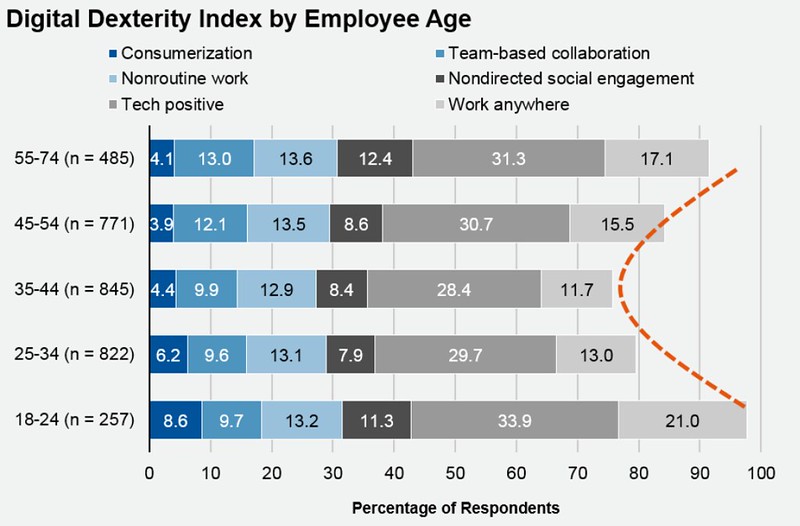
Digital dexterity keeps an organization nimble and adaptable. Source: Shutterstock
Does your company have digital dexterity?
WHEN companies are thinking about a digital transformation, they’re ready to invest in digital tools and solutions that will help them get more out of their executives.
However, the question that many leaders should ask is: does my company and its executives have digital dexterity? If you don’t, your investments would reap the results you hoped since adoption and use of those digital solutions won’t be optimal.
On the other hand, organizations with high digital dexterity find that its employees have the cognitive ability and social practice to leverage and manipulate media, information, and technology in unique and highly innovative ways.
According to a Gartner survey, only 7 percent to 18 percent of organizations possess the digital dexterity to adopt new ways of work (NWOW) solutions, such as virtual collaboration and mobile work.
By country, organizations exhibiting the highest digital dexterity were those in the US, followed by those in Germany and then the UK. Asian countries on the other hand, including Singapore and Japan, didn’t do so well.
“Solutions targeting new ways of work are tapping into a high-growth area, but finding the right organizations ready to exploit these technologies is challenging,” said Craig Roth, Research Vice President, Gartner.
Gartner’s survey suggested that workers in the top three countries were much more open to working from anywhere, in a nonoffice fashion and had a desire to use consumer (or consumer-like) software and websites at work.
Some of the difference in workers’ digital dexterity is driven by cultural factors, as shown by large differences between countries.
For example, population density impacts the ability to work outside the office, and countries with more adherence to organizational hierarchy had decreased affinity for social media tools that drive social engagement.
When it comes to digital dexterity, age matters.
Gartner’s survey found that the youngest workers are the most inclined of all age groups to adopt digital-workplace-driven products and services.
They have a positive view of tech in the workplace and a strong affinity for working in nonoffice environments.
Nevertheless, they reported the lowest levels of agreement with the statement that work is best accomplished in teams.

Surprisingly, the survey showed that the oldest workers are the second most likely adopters of NWOW.
Those aged 55 to 74 have the highest opinion of teamwork, have progressed to a position where there is little routine work, and have the most favorable view of all age groups of internal social networking technology.
Workers aged 35 to 44 were at the low point of the adoption dip, potentially feeling fatigued with the routines of life as middle age approached.
They were most likely to report that their jobs are routine, have the dimmest view of how technology can help their work and are the least interested in mobile work.
Larger organizations on average had higher digital dexterity than smaller ones, according to the survey.
“Embracing dynamic work styles, devices, work locations and team structures can transform a business and its relationship to its staff. But digital dexterity doesn’t come cheap,” said Roth.
“It takes investment in workplace design, mobile devices, and software, and larger organizations find it easier to make this investment,” he added.
READ MORE
- Ethical AI: The renewed importance of safeguarding data and customer privacy in Generative AI applications
- How Japan balances AI-driven opportunities with cybersecurity needs
- Deploying SASE: Benchmarking your approach
- Insurance everywhere all at once: the digital transformation of the APAC insurance industry
- Google parent Alphabet eyes HubSpot: A potential acquisition shaping the future of CRM




